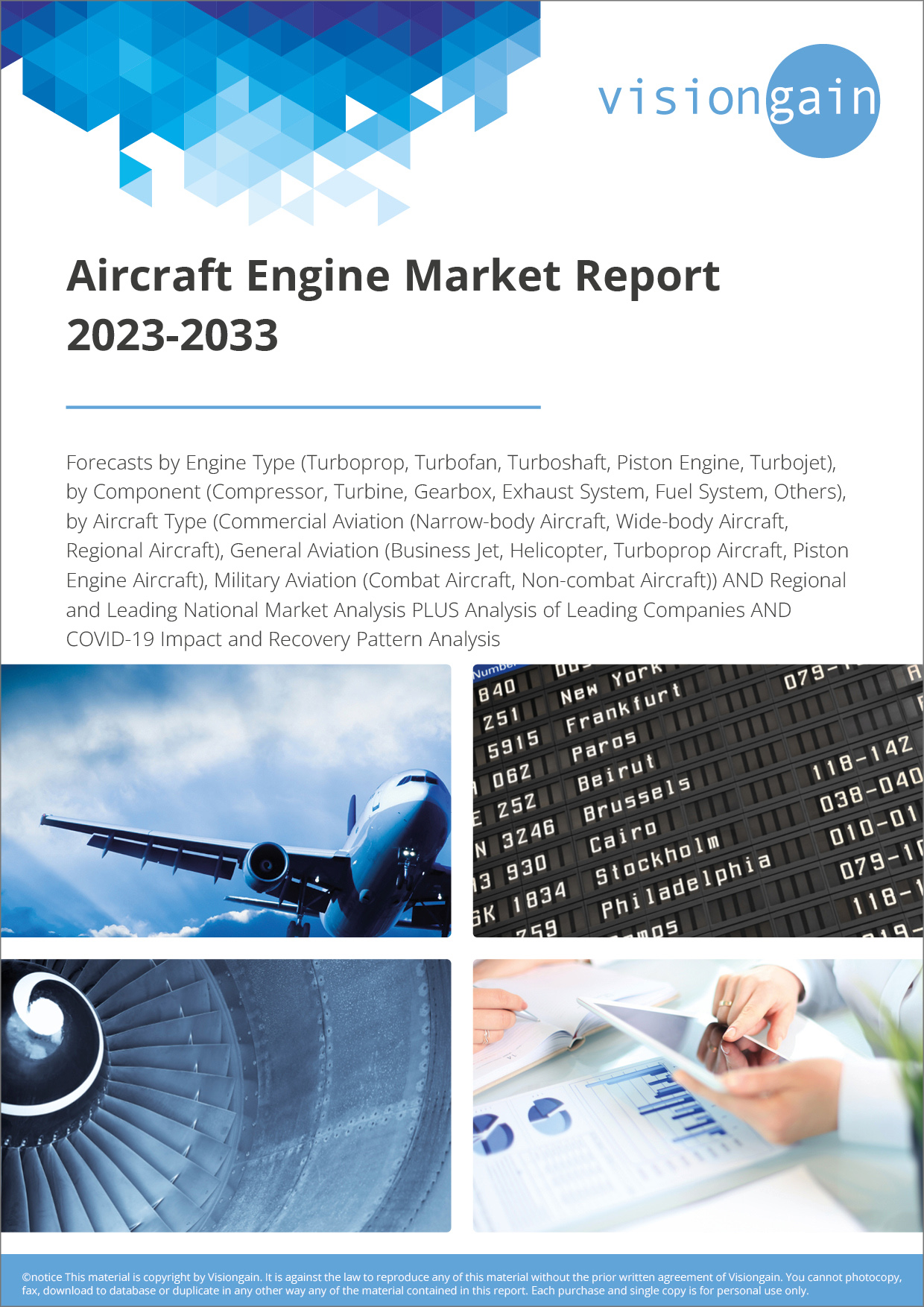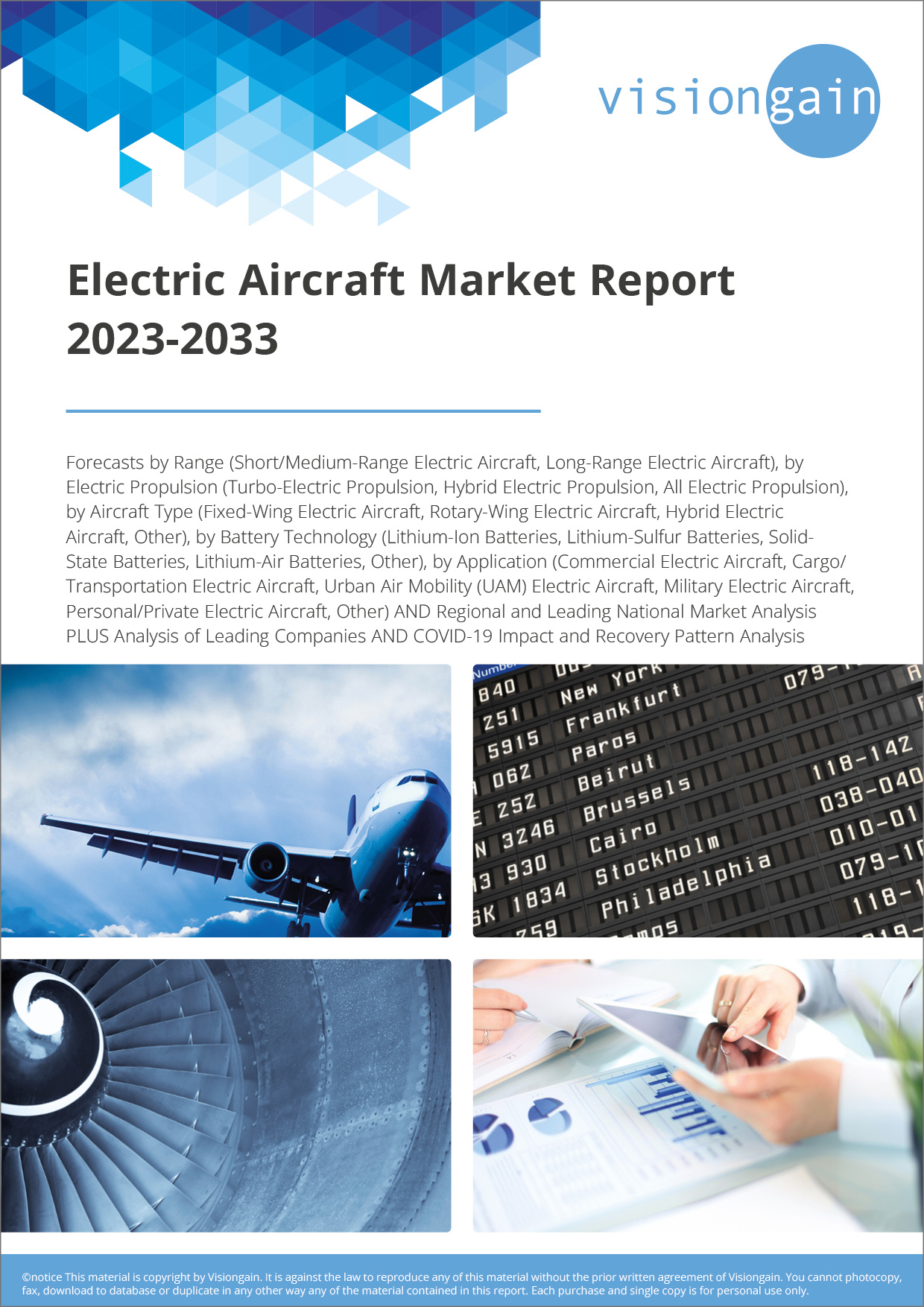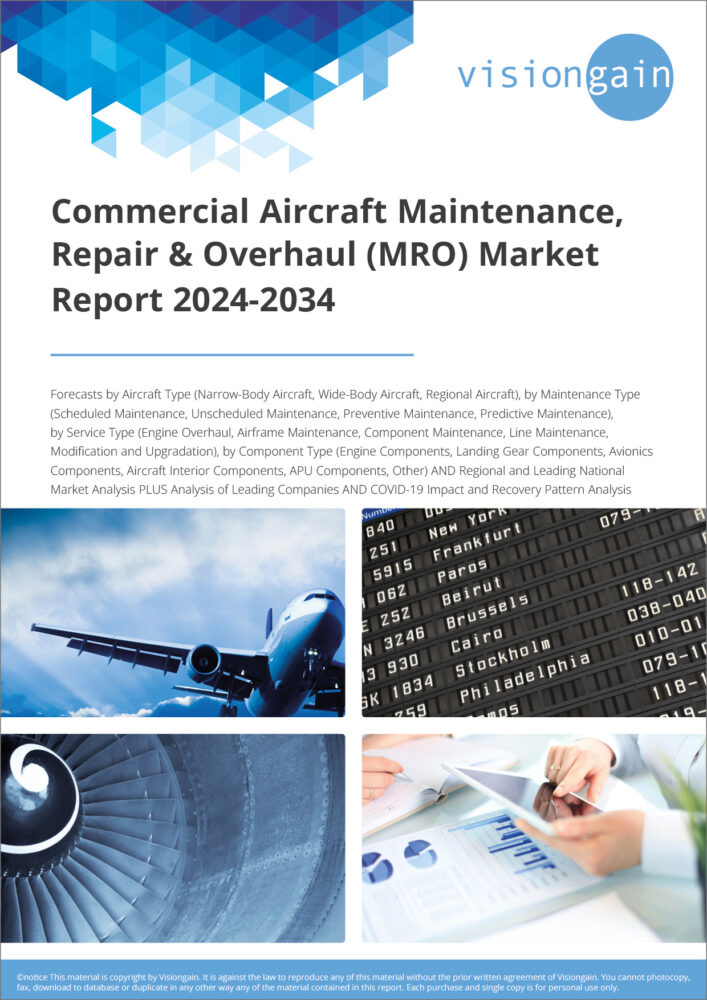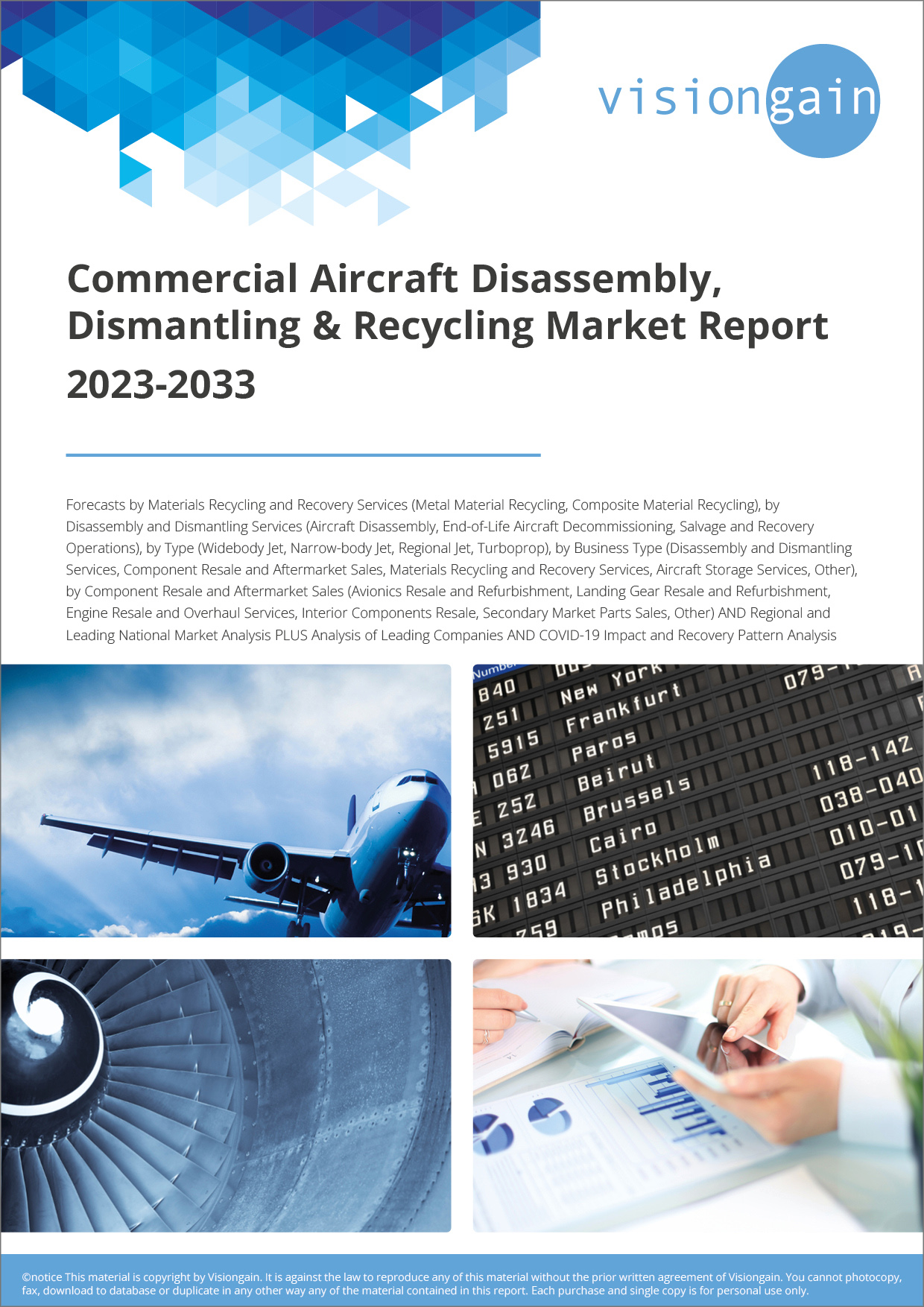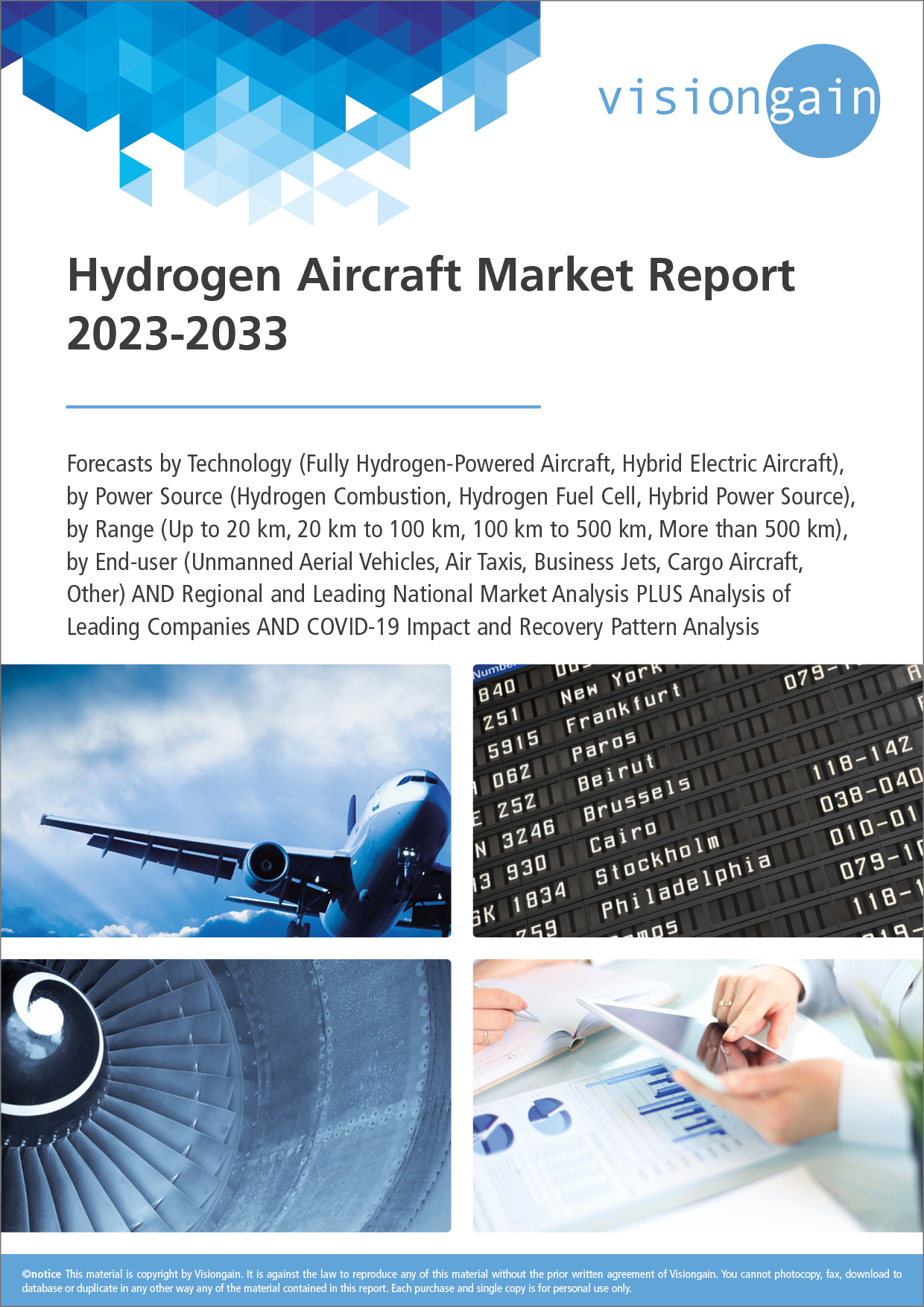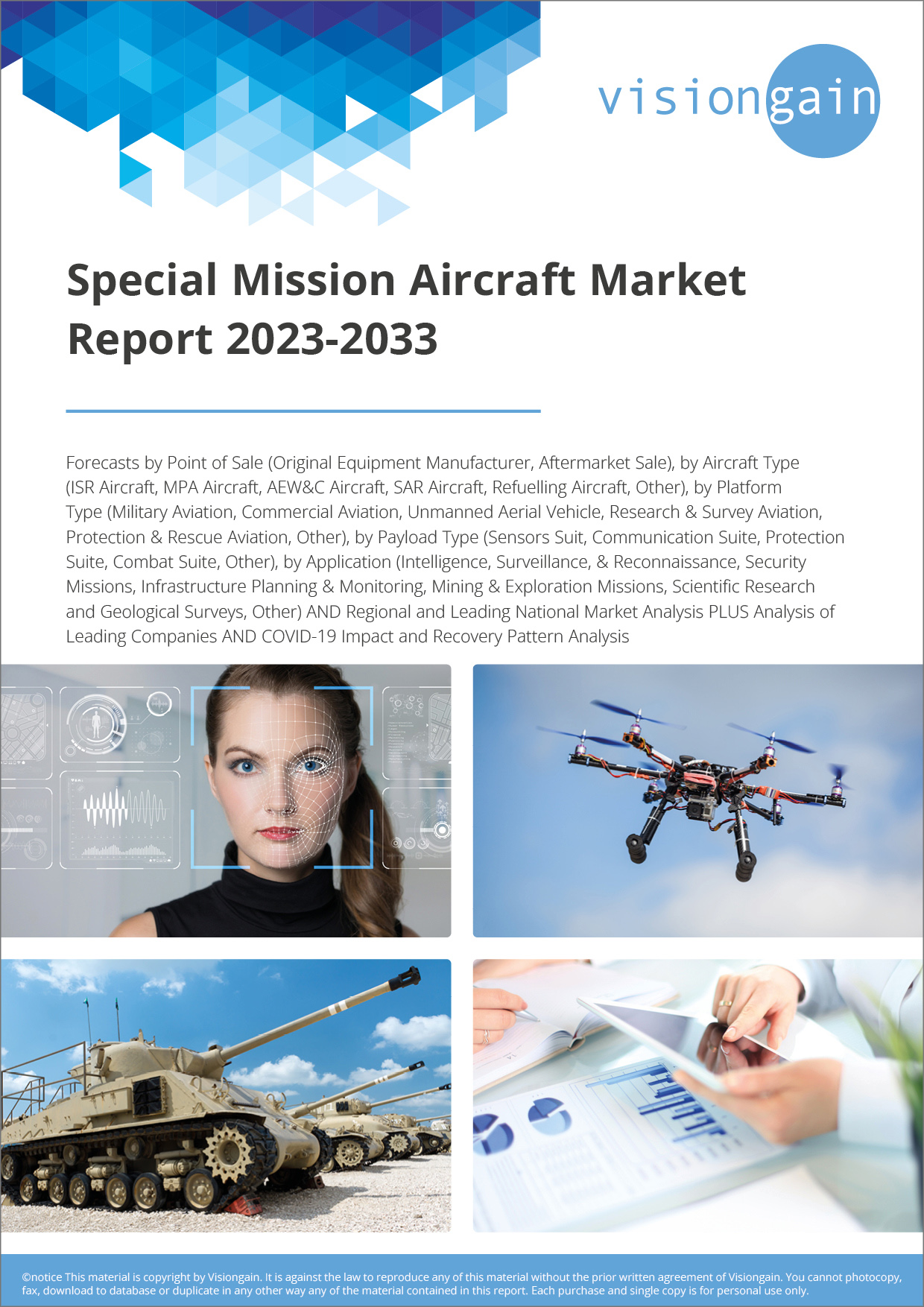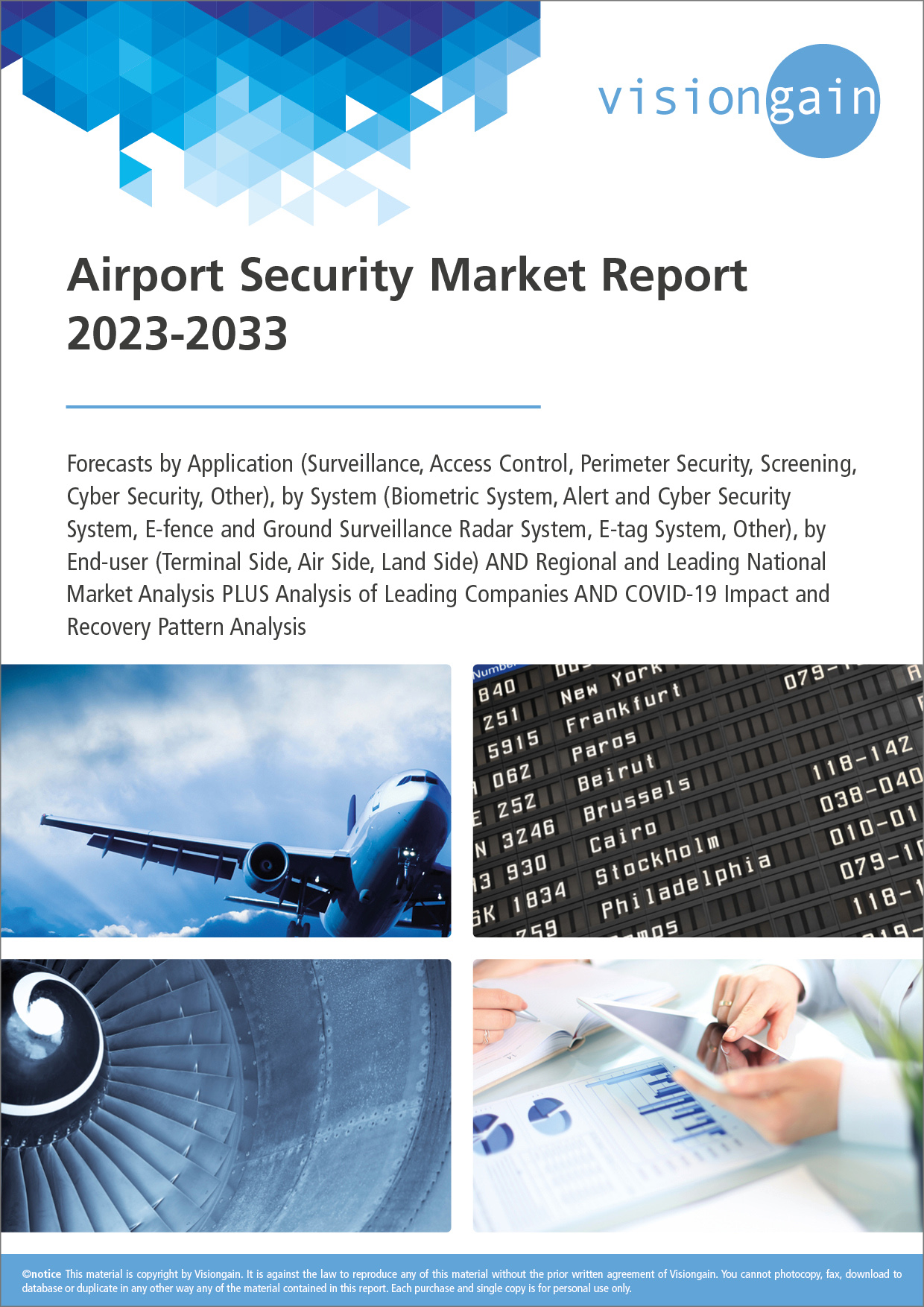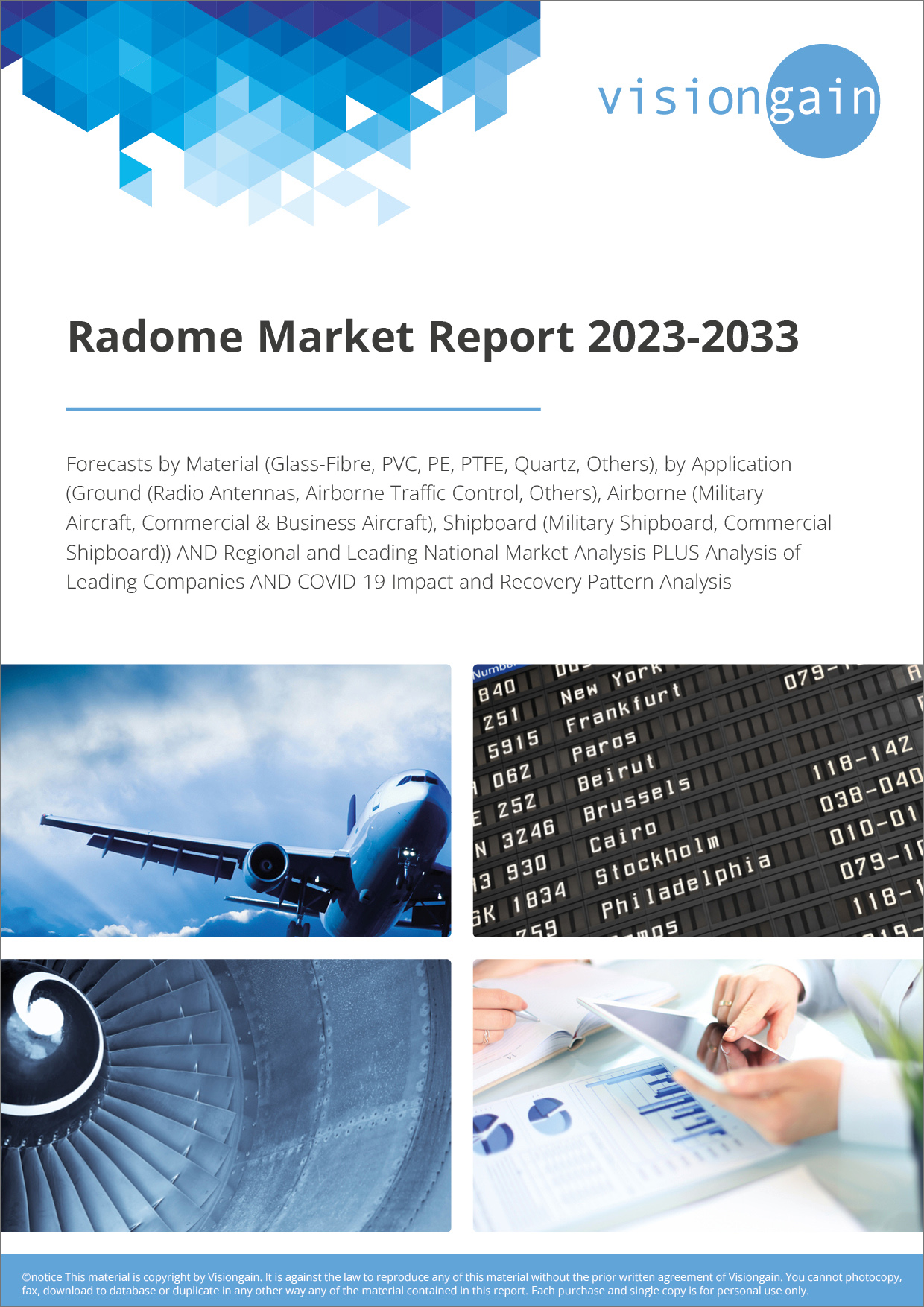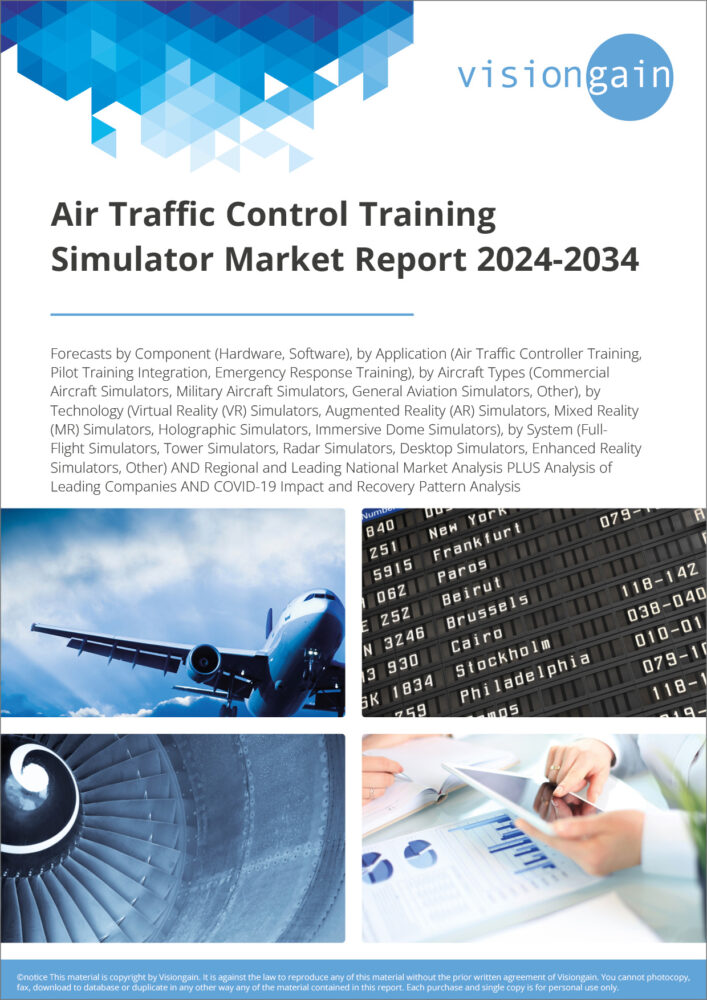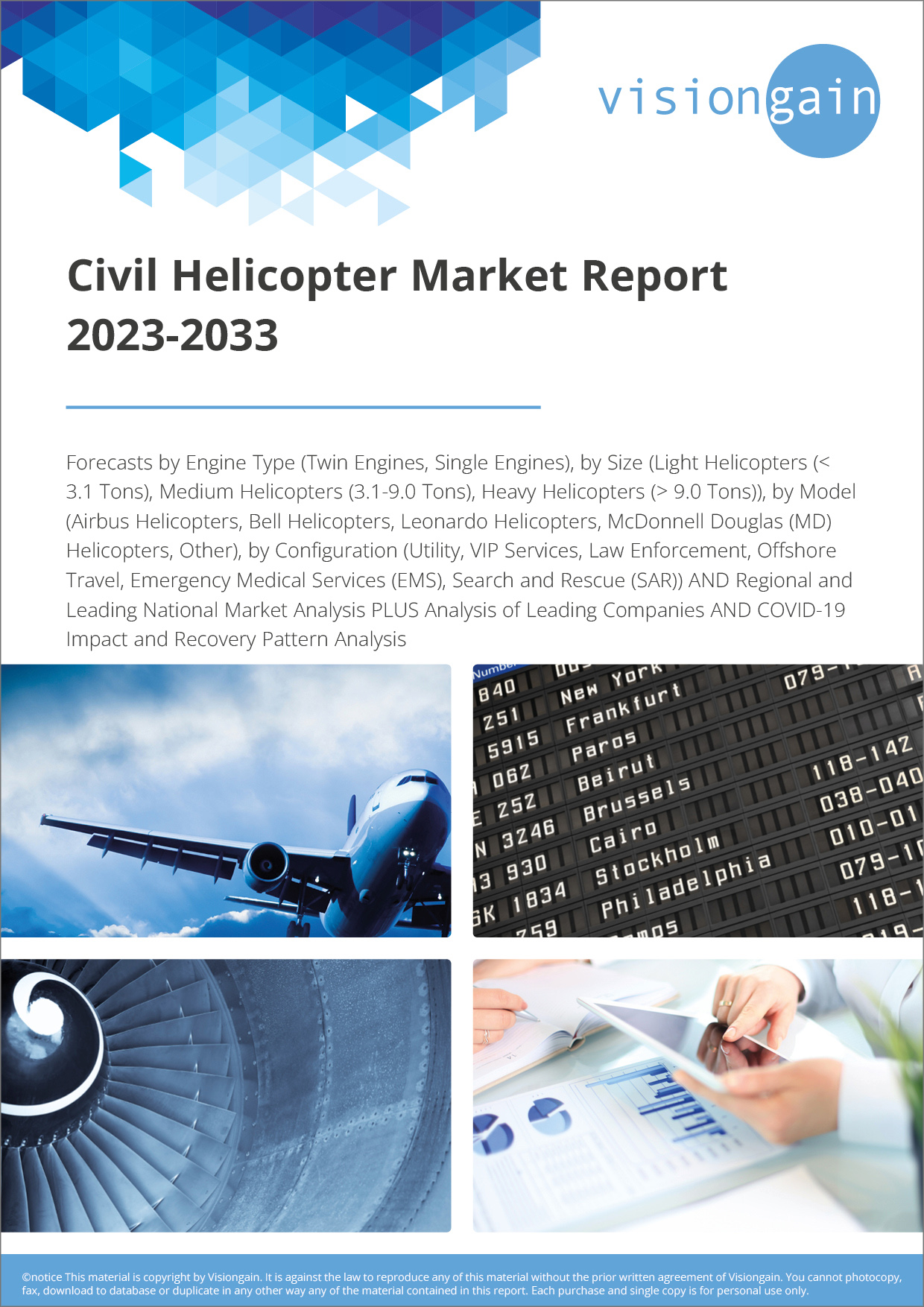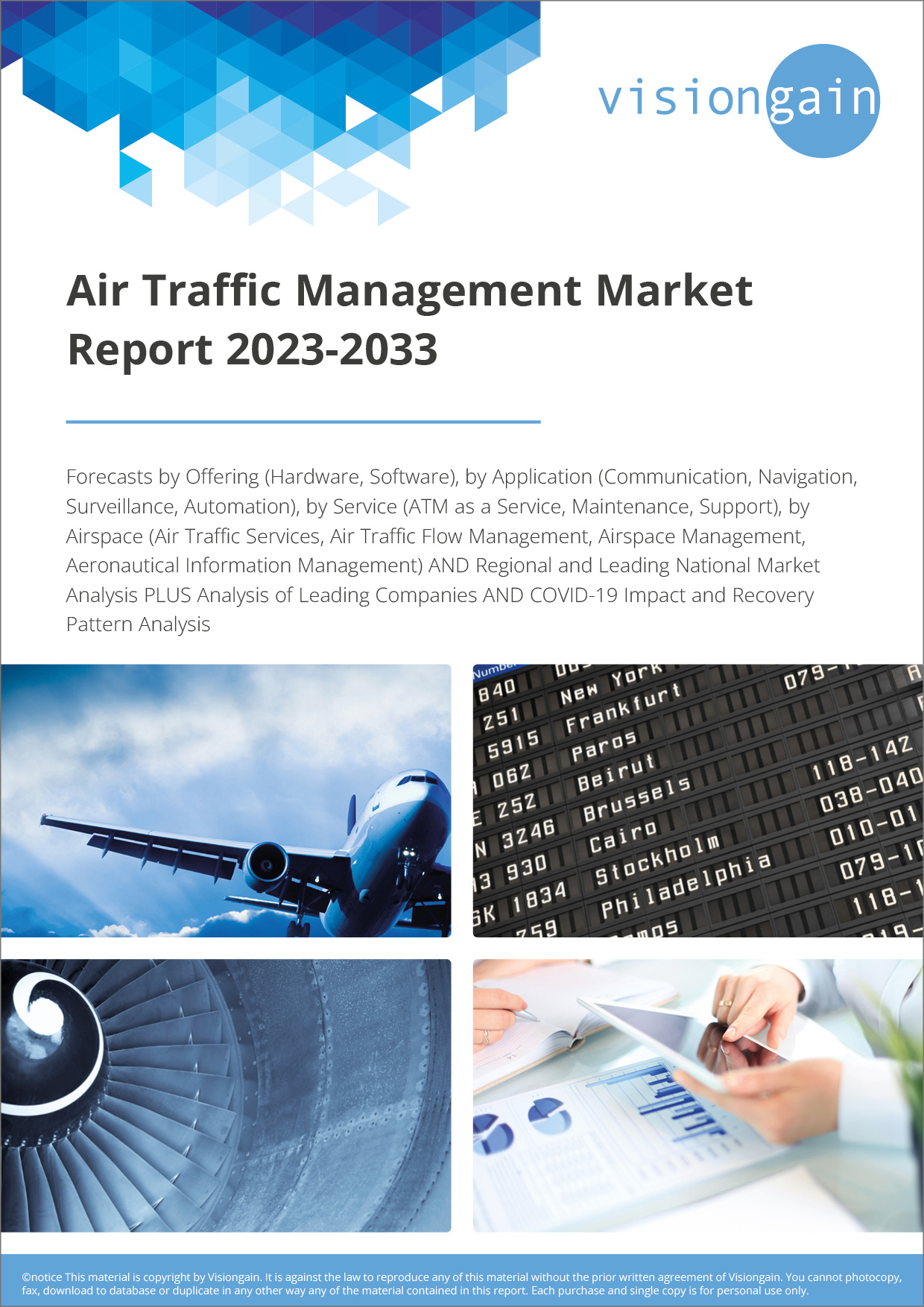The Aircraft Engine Market Report 2023-2033: This report will prove invaluable to leading firms striving for new revenue pockets if they wish to better understand the industry and its underlying dynamics. It will be useful for companies that would like to expand into different industries or to expand their existing operations in a new region.
Rising Demand for Zero-emission Aircraft
Increasingly strict emission regulations have prompted manufacturers to adopt the zero-emission concept. The engine manufacturers will play a crucial role in the aviation industry’s transition to the new concept. Sustainable aviation fuel (SAF) is an integral element of the aviation industry’s plan to reduce CO2 emissions, as corporations such as Airbus and Boeing aim for 100% SAF flights.
The pressing issue of mitigating carbon emissions remains a significant concern for the industry, and all parties acknowledge and appreciate the urgency of prompt intervention. The aviation industry is currently facing several noteworthy challenges, including the implementation of environmental levies and regulations, and the growing emphasis on Environment, Social, and Governance (ESG) concerns among investors.
Whilst aviation accounts for roughly 2.5% of worldwide carbon dioxide emissions, the means by which it can effectively mitigate its carbon footprint is less apparent in comparison to other sectors. Offsetting represents a potential strategy for mitigating present carbon emissions, albeit one that necessitates heightened oversight and regulation and is generally regarded as a provisional rather than a lasting remedy.
Aircraft engines traditionally rely on conventional jet fuel, which is derived from fossil fuels. However, the combustion of fossil fuels releases significant amounts of carbon dioxide (CO2) and other greenhouse gases into the atmosphere, contributing to climate change. To address this issue, Sustainable aviation fuel (SAF) has emerged as a sustainable alternative that can help reduce the aviation sector’s carbon footprint.
Integrating SAF into aircraft engines is relevant not only from an environmental perspective but also in terms of regulatory compliance and industry sustainability goals. Airlines and aircraft manufacturers are actively exploring and adopting SAF as part of their efforts to achieve carbon neutrality and reduce their carbon emissions. Governments and regulatory bodies are also supporting the use of SAF through incentives, mandates, and policy frameworks to accelerate its adoption in the aviation sector.
The primary immediate concern pertains to Sustainable aviation fuel (SAF), however, there exist noteworthy obstacles in terms of supply and cost. Certain lessors have investigated intriguing collaborations concerning Sustainable aviation fuel (SAF), however, a collaborative and more synchronised endeavour is imperative throughout the entire aviation industry, as well as from governments worldwide, if SAF is to fulfil the carbon reduction objectives envisioned by the International Air Transport Association (IATA).
Stringent Regulatory Environment for Aircraft Engine Manufacturing to Restrain Industry Growth
The aerospace industry has extremely stringent passenger and aircraft safety regulations. As a result, the aviation industry has created regulatory standards to address these issues and continues to modify them to attain the highest safety standard for the industry’s safety and development. Therefore, aircraft engine manufacturers must also develop new products to meet these requirements.
One of these regulatory requirements is the replacement of bulkier engine components with lighter metal components. Thus, maintenance services provided by key participants in the market for aircraft engines are required to maintain the safety and regulatory standards of the aviation industry.
Several countries have regulatory agencies responsible for ensuring the safety standards of aviation. For example, the safety regulation division of the Irish Aviation Authority (IAA) oversees the regulatory functions related to certifying and registering aircraft engine components and services, licensing individuals and organizations involved in component maintenance, and supervising aircraft engine operating standards. This division also conducts audits & inspections of airports, airport vendors, & inflight service providers.
On a global scale, the International Civil Aviation Organization (ICAO) has established rules that must be universally followed. These regulations are essential for maintaining the safety of aircraft operations and mitigating risks associated with faulty components. All aircraft systems & components must meet the regulatory standards set by the ICAO to ensure adherence to safety requirements. Hence, such factors are anticipated to restrain industry growth over the forecast period.
What Questions Should You Ask before Buying a Market Research Report?
• How is the aircraft engine market evolving?
• What is driving and restraining the aircraft engine market?
• How will each aircraft engine submarket segment grow over the forecast period and how much revenue will these submarkets account for in 2033?
• How will the market shares for each aircraft engine submarket develop from 2023 to 2033?
• What will be the main driver for the overall market from 2023 to 2033?
• Will leading aircraft engine markets broadly follow the macroeconomic dynamics, or will individual national markets outperform others?
• How will the market shares of the national markets change by 2033 and which geographical region will lead the market in 2033?
• Who are the leading players and what are their prospects over the forecast period?
• What are the aircraft engine projects for these leading companies?
• How will the industry evolve during the period between 2023 and 2033? What are the implications of
aircraft engine projects taking place now and over the next 10 years?
• Is there a greater need for product commercialisation to further scale the aircraft engine market?
• Where is the aircraft engine market heading and how can you ensure you are at the forefront of the market?
• What are the best investment options for new product and service lines?
• What are the key prospects for moving companies into a new growth path and C-suite?
You need to discover how this will impact the aircraft engine market today, and over the next 10 years:
• Our 304-page report provides 111 tables and 157 charts/graphs exclusively to you.
• The report highlights key lucrative areas in the industry so you can target them – NOW.
• It contains in-depth analysis of global, regional and national sales and growth.
• It highlights for you the key successful trends, changes and revenue projections made by your competitors.
This report tells you TODAY how the aircraft engine market will develop in the next 10 years, and in line with the variations in COVID-19 economic recession and bounce. This market is more critical now than at any point over the last 10 years.
Forecasts to 2033 and other analyses reveal commercial prospects
• In addition to revenue forecasting to 2033, our new study provides you with recent results, growth rates, and market shares.
• You will find original analyses, with business outlooks and developments.
• Discover qualitative analyses (including market dynamics, drivers, opportunities, and restraints), Porter’s Five Forces Analysis, PEST Analysis and recent developments.
This report includes data analysis and invaluable insight into how COVID-19 will affect the industry and your company. Four COVID-19 recovery patterns and their impact, namely, “V”, “L”, “W” and “U” are discussed in this report.
Segments Covered in the Report
Engine Type
• Turboprop
• Turbofan
• Turboshaft
• Piston Engine
• Turbojet
Component
• Compressor
• Turbine
• Gearbox
• Exhaust System
• Fuel System
• Others
Aircraft Type
• Commercial Aviation
• General Aviation
• Military Aviation

In addition to the revenue predictions for the overall world market and segments, you will also find revenue forecasts for five regional and 21 leading national markets:
North America
• U.S.
• Canada
Europe
• Germany
• UK
• France
• Italy
• Spain
• Russia
• Rest of Europe
Asia Pacific
• Japan
• China
• India
• Australia
• South Korea
• Rest of Asia Pacific
Latin America
• Brazil
• Mexico
• Rest of Latin America
MEA
• GCC
• South Africa
• Rest of MEA
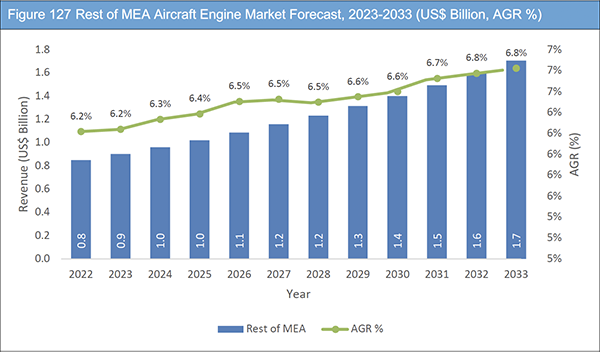
Need industry data? Please contact us today.
The report also includes profiles and for some of the leading companies in the Aircraft Engine Market, 2023 to 2033, with a focus on this segment of these companies’ operations.
Leading companies and the potential for market growth
• Barnes Group Inc.
• CFM International
• Collins Aerospace
• GE Aerospace
• Honeywell International, Inc.
• IHI Corp.
• Lycoming Engines
• Mitsubishi Heavy Industries Ltd,
• MTU Aero Engines AG
• Pratt & Whitney (Subsidiary of Raytheon)
• Rolls-Royce plc
• Rostec
• Safran
• Textron Inc.
• UEC-Aviadvigatel
Overall world revenue for Aircraft Engine Market, 2023 to 2033 in terms of value the market will surpass US$74.0 billion in 2023, our work calculates. We predict strong revenue growth through to 2033. Our work identifies which organizations hold the greatest potential. Discover their capabilities, progress, and commercial prospects, helping you stay ahead.
How will the Aircraft Engine Market, 2023 to 2033 report help you?
In summary, our 300+ page report provides you with the following knowledge:
• Revenue forecasts to 2033 for Aircraft Engine Market, 2023 to 2033 Market, with forecasts for engine type, component, and aircraft type, each forecast at a global and regional level – discover the industry’s prospects, finding the most lucrative places for investments and revenues.
• Revenue forecasts to 2033 for five regional and 21 key national markets – See forecasts for the Aircraft Engine Market, 2023 to 2033 market in North America, Europe, Asia-Pacific, Latin America, and MEA. Also forecasted is the market in the US, Canada, Mexico, Brazil, Germany, France, UK, Italy, China, India, Japan, and Australia among other prominent economies.
• Prospects for established firms and those seeking to enter the market – including company profiles for 15 of the major companies involved in the Aircraft Engine Market, 2023 to 2033.
Find quantitative and qualitative analyses with independent predictions. Receive information that only our report contains, staying informed with invaluable business intelligence.
Information found nowhere else
With our new report, you are less likely to fall behind in knowledge or miss out on opportunities. See how our work could benefit your research, analyses, and decisions. Visiongain’s study is for everybody needing commercial analyses for the Aircraft Engine Market, 2023 to 2033, market-leading companies. You will find data, trends and predictions.
To access the data contained in this document please email contactus@visiongain.com
Buy our report today Aircraft Engine Market Report 2023-2033: Forecasts by Engine Type (Turboprop, Turbofan, Turboshaft, Piston Engine, Turbojet), by Component (Compressor, Turbine, Gearbox, Exhaust System, Fuel System, Others), by Aircraft Type (Commercial Aviation (Narrow-body Aircraft, Wide-body Aircraft, Regional Aircraft), General Aviation (Business Jet, Helicopter, Turboprop Aircraft, Piston Engine Aircraft), Military Aviation (Combat Aircraft, Non-combat Aircraft)) AND Regional and Leading National Market Analysis PLUS Analysis of Leading Companies AND COVID-19 Impact and Recovery Pattern Analysis. Avoid missing out by staying informed – order our report now.
Visiongain is a trading partner with the US Federal Government
CCR Ref number: KD4R6
Do you have any custom requirements we can help you with? Any need for a specific country, geo region, market segment or specific company information? Contact us today, we can discuss your needs and see how we can help: contactus@visiongain.com
1 Report Overview
1.1 Objectives of the Study
1.2 Introduction to Aircraft Engine Market
1.3 What This Report Delivers
1.4 Why You Should Read This Report
1.5 Key Questions Answered by This Analytical Report Include:
1.6 Who is This Report For?
1.7 Methodology
1.7.1 Market Definitions
1.7.2 Market Evaluation & Forecasting Methodology
1.7.3 Data Validation
1.7.3.1 Primary Research
1.7.3.2 Secondary Research
1.8 Frequently Asked Questions (FAQs)
1.9 Associated Visiongain Reports
1.10 About Visiongain
2 Executive Summary
3 Market Overview
3.1 Key Findings
3.2 Market Dynamics
3.2.1 Market Driving Factors
3.2.1.1 Recovery in Global Air Transport
3.2.1.2 Rising Demand for Fuel-efficient Aircraft Engines
3.2.1.3 Growing Efforts from Government and Defence Contractors to Build Indigenous Engines to Drive Industry Growth
3.2.2 Market Restraining Factors
3.2.2.1 Order Backlogs from Major Manufacturers Likely to Restrain Industry Growth
3.2.2.2 Labour Shortages Coupled with Supply Chain Issues to Hamper Market Growth
3.2.2.3 Stringent Regulatory Environment for Aircraft Engine Manufacturing
3.2.3 Market Opportunities
3.2.3.1 Innovation in Technology and Approaches to Redefine Mobility
3.2.3.2 Increasing Commercial Aviation Sector
3.2.3.3 Digitization in Aviation Engine Trading to Offer Lucrative Growth Opportunities
3.2.3.4 Rising Demand for Zero-emission Aircraft
3.3 COVID-19 Impact Analysis
3.4 Porter’s Five Forces Analysis
3.4.1 Supplier Power
3.4.2 Buyer Power
3.4.3 Competitive Rivalry
3.4.4 Threat from Substitutes
3.4.5 Threat of New Entrants
3.5 PEST Analysis
4 Aircraft Engine Market Analysis by Engine Type
4.1 Key Findings
4.2 Engine Type Segment: Market Attractiveness Index
4.3 Aircraft Engine Market Size Estimation and Forecast by Engine Type
4.4 Turboprop
4.4.1 Market Forecast by Region, 2023-2033 (US$ Bn, AGR %)
4.4.2 Market Share by Region, 2023 & 2033 (%)
4.5 Turbofan
4.5.1 Market Forecast by Region, 2023-2033 (US$ Bn, AGR %)
4.5.2 Market Share by Region, 2023 & 2033 (%)
4.6 Turboshaft
4.6.1 Market Forecast by Region, 2023-2033 (US$ Bn, AGR %)
4.6.2 Market Share by Region, 2023 & 2033 (%)
4.7 Piston Engine
4.7.1 Market Forecast by Region, 2023-2033 (US$ Bn, AGR %)
4.7.2 Market Share by Region, 2023 & 2033 (%)
4.8 Turbojet
4.8.1 Market Forecast by Region, 2023-2033 (US$ Bn, AGR %)
4.8.2 Market Share by Region, 2023 & 2033 (%)
5 Aircraft Engine Market Analysis by Component
5.1 Key Findings
5.2 Component Segment: Market Attractiveness Index
5.3 Aircraft Engine Market Size Estimation and Forecast by Component
5.4 Compressor
5.4.1 Market Forecast by Region, 2023-2033 (US$ Bn, AGR %)
5.4.2 Market Share by Region, 2023 & 2033 (%)
5.5 Turbine
5.5.1 Market Forecast by Region, 2023-2033 (US$ Bn, AGR %)
5.5.2 Market Share by Region, 2023 & 2033 (%)
5.6 Gearbox
5.6.1 Market Forecast by Region, 2023-2033 (US$ Bn, AGR %)
5.6.2 Market Share by Region, 2023 & 2033 (%)
5.7 Exhaust System
5.7.1 Market Forecast by Region, 2023-2033 (US$ Bn, AGR %)
5.7.2 Market Share by Region, 2023 & 2033 (%)
5.8 Fuel System
5.8.1 Market Forecast by Region, 2023-2033 (US$ Bn, AGR %)
5.8.2 Market Share by Region, 2023 & 2033 (%)
5.9 Others
5.9.1 Market Forecast by Region, 2023-2033 (US$ Bn, AGR %)
5.9.2 Market Share by Region, 2023 & 2033 (%)
6 Aircraft Engine Market Analysis by Aircraft Type
6.1 Key Findings
6.2 Aircraft Type Segment: Market Attractiveness Index
6.3 Aircraft Engine Market Size Estimation and Forecast by Aircraft Type
6.4 Commercial Aviation
6.4.1 Market Forecast by Region, 2023-2033 (US$ Bn, AGR %)
6.4.2 Market Share by Region, 2023 & 2033 (%)
6.4.2.1 Commercial Aviation Segment Market Forecast by Type, 2023-2033 (US$ Bn, AGR %)
6.5 General Aviation
6.5.1 Market Forecast by Region, 2023-2033 (US$ Bn, AGR %)
6.5.2 Market Share by Region, 2023 & 2033 (%)
6.5.2.1 General Aviation Segment Market Forecast by Type, 2023-2033 (US$ Bn, AGR %)
6.6 Military Aviation
6.6.1 Market Forecast by Region, 2023-2033 (US$ Bn, AGR %)
6.6.2 Market Share by Region, 2023 & 2033 (%)
6.6.2.1 Military Aviation Segment Market Forecast by Type, 2023-2033 (US$ Bn, AGR %)
7 Aircraft Engine Market Analysis by Region
7.1 Key Findings
7.2 Regional Market Size Estimation and Forecast
8 North America Aircraft Engine Market Analysis
8.1 Key Findings
8.2 North America Aircraft Engine Market Attractiveness Index
8.3 Market Size by Country, 2023, 2028 & 2033 (US$ Bn)
8.4 Market Size Estimation and Forecast by Country, 2023-2033 (US$ Bn)
8.5 Market Size Estimation and Forecast by Engine Type, 2023-2033 (US$ Bn)
8.6 Market Size Estimation and Forecast by Component, 2023-2033 (US$ Bn)
8.7 Market Size Estimation and Forecast by Aircraft Type, 2023-2033 (US$ Bn)
8.8 U.S. Aircraft Engine Market Analysis
8.9 Canada Aircraft Engine Market Analysis
9 Europe Aircraft Engine Market Analysis
9.1 Key Findings
9.2 Europe Aircraft Engine Market Attractiveness Index
9.3 Market Size by Country, 2023, 2028 & 2033 (US$ Bn)
9.4 Market Size Estimation and Forecast by Country, 2023-2033 (US$ Bn)
9.5 Market Size Estimation and Forecast by Engine Type, 2023-2033 (US$ Bn)
9.6 Market Size Estimation and Forecast by Component, 2023-2033 (US$ Bn)
9.7 Market Size Estimation and Forecast by Aircraft Type, 2023-2033 (US$ Bn)
9.8 Germany Aircraft Engine Market Analysis
9.9 UK Aircraft Engine Market Analysis
9.10 France Aircraft Engine Market Analysis
9.11 Italy Aircraft Engine Market Analysis
9.12 Spain Aircraft Engine Market Analysis
9.13 Russia Aircraft Engine Market Analysis
9.14 Rest of Europe Aircraft Engine Market Analysis
10 Asia Pacific Aircraft Engine Market Analysis
10.1 Key Findings
10.2 Asia Pacific Aircraft Engine Market Attractiveness Index
10.3 Market Size by Country, 2023, 2028 & 2033 (US$ Bn)
10.4 Market Size Estimation and Forecast by Country, 2023-2033 (US$ Bn)
10.5 Market Size Estimation and Forecast by Engine Type, 2023-2033 (US$ Bn)
10.6 Market Size Estimation and Forecast by Component, 2023-2033 (US$ Bn)
10.7 Market Size Estimation and Forecast by Aircraft Type, 2023-2033 (US$ Bn)
10.8 Japan Aircraft Engine Market Analysis
10.9 China Aircraft Engine Market Analysis
10.10 India Aircraft Engine Market Analysis
10.11 Australia Aircraft Engine Market Analysis
10.12 South Korea Aircraft Engine Market Analysis
10.13 Rest of Asia Pacific Aircraft Engine Market Analysis
11 Latin America Aircraft Engine Market Analysis
11.1 Key Findings
11.2 Latin America Aircraft Engine Market Attractiveness Index
11.3 Market Size by Country, 2023, 2028 & 2033 (US$ Bn)
11.4 Market Size Estimation and Forecast by Country, 2023-2033 (US$ Bn)
11.5 Market Size Estimation and Forecast by Engine Type, 2023-2033 (US$ Bn)
11.6 Market Size Estimation and Forecast by Component, 2023-2033 (US$ Bn)
11.7 Market Size Estimation and Forecast by Aircraft Type, 2023-2033 (US$ Bn)
11.8 Brazil Aircraft Engine Market Analysis
11.9 Mexico Aircraft Engine Market Analysis
11.10 Rest of Latin America Aircraft Engine Market Analysis
12 MEA Aircraft Engine Market Analysis
12.1 Key Findings
12.2 MEA Aircraft Engine Market Attractiveness Index
12.3 Market Size by Country, 2023, 2028 & 2033 (US$ Bn)
12.4 Market Size Estimation and Forecast by Country, 2023-2033 (US$ Bn)
12.5 Market Size Estimation and Forecast by Engine Type, 2023-2033 (US$ Bn)
12.6 Market Size Estimation and Forecast by Component, 2023-2033 (US$ Bn)
12.7 Market Size Estimation and Forecast by Aircraft Type, 2023-2033 (US$ Bn)
12.8 GCC Aircraft Engine Market Analysis
12.9 South Africa Aircraft Engine Market Analysis
12.10 Rest of MEA Aircraft Engine Market Analysis
13 Company Profiles
13.1 Company Share Analysis
13.2 Strategic Outlook
13.3 CFM International
13.3.1 Company Snapshot
13.3.2 Company Overview
13.3.3 Product Benchmarking
13.4 GE Aerospace
13.4.1 Company Snapshot
13.4.2 Company Overview
13.4.3 Financial Analysis
13.4.3.1 Net Revenue, 2017-2022
13.4.3.2 Regional Market Shares, 2022
13.4.3.3 R&D, 2017-2022
13.4.3.4 Business Segment Market Shares, 2022
13.4.4 Product Benchmarking
13.4.5 Strategic Outlook
13.5 IHI Corp.
13.5.1 Company Snapshot
13.5.2 Company Overview
13.5.3 Financial Analysis
13.5.3.1 Net Revenue, 2017-2022
13.5.3.2 Regional Market Shares, 2022
13.5.3.3 Business Segment Market Shares, 2022
13.5.4 Product Benchmarking
13.5.5 Strategic Outlook
13.6 Mitsubishi Heavy Industries Aero Engines Ltd.
13.6.1 Company Snapshot
13.6.2 Company Overview
13.6.3 Financial Analysis
13.6.3.1 Net Revenue, 2017-2022
13.6.3.2 Regional Market Shares, 2022
13.6.3.3 Business Segment Market Shares, 2022
13.6.4 Product Benchmarking
13.6.5 Strategic Outlook
13.7 MTU Aero Engines AG
13.7.1 Company Snapshot
13.7.2 Company Overview
13.7.3 Financial Analysis
13.7.3.1 Net Revenue, 2017-2022
13.7.3.2 Regional Market Shares, 2022
13.7.3.3 R&D, 2017-2022
13.7.3.4 Business Segment Market Shares, 2022
13.7.4 Product Benchmarking
13.7.5 Strategic Outlook
13.8 Pratt & Whitney (Subsidiary of Raytheon)
13.8.1 Company Snapshot
13.8.2 Company Overview
13.8.3 Financial Analysis
13.8.3.1 Net Revenue, 2017-2022
13.8.3.2 Regional Market Shares, 2022
13.8.3.3 Business Segment Market Shares, 2022
13.8.4 Product Benchmarking
13.8.5 Strategic Outlook
13.9 Rolls-Royce plc
13.9.1 Company Snapshot
13.9.2 Company Overview
13.9.3 Financial Analysis
13.9.3.1 Net Revenue, 2017-2022
13.9.3.2 Regional Market Shares, 2022
13.9.3.3 R&D, 2017-2022
13.9.3.4 Business Segment Market Shares, 2022
13.9.4 Product Benchmarking
13.9.5 Strategic Outlook
13.10 Rostec
13.10.1 Company Snapshot
13.10.2 Company Overview
13.10.3 Product Benchmarking
13.11 Safran
13.11.1 Company Snapshot
13.11.2 Company Overview
13.11.3 Financial Analysis
13.11.3.1 Net Revenue, 2017-2022
13.11.3.2 Business Segment Market Shares, 2022
13.11.4 Product Benchmarking
13.11.5 Strategic Outlook
13.12 Textron Inc.
13.12.1 Company Snapshot
13.12.2 Company Overview
13.12.3 Financial Analysis
13.12.3.1 Net Revenue, 2017-2022
13.12.3.2 Regional Market Shares, 2022
13.12.3.3 Business Segment Market Shares, 2022
13.12.4 Product Benchmarking
13.13 Collins Aerospace
13.13.1 Company Snapshot
13.13.2 Company Overview
13.13.3 Product Benchmarking
13.13.4 Strategic Outlook
13.14 Honeywell International, Inc.
13.14.1 Company Snapshot
13.14.2 Company Overview
13.14.3 Financial Analysis
13.14.3.1 Net Revenue, 2017-2022
13.14.3.2 Regional Market Shares, 2022
13.14.3.3 Business Segment Market Shares, 2022
13.14.4 Product Benchmarking
13.15 Barnes Group Inc.
13.15.1 Company Snapshot
13.15.2 Company Overview
13.15.3 Product Benchmarking
13.15.4 Strategic Outlook
13.16 UEC-Aviadvigatel
13.16.1 Company Snapshot
13.16.2 Company Overview
13.16.3 Product Benchmarking
13.16.4 Strategic Outlook
13.17 LYCOMING ENGINES
13.17.1 Company Snapshot
13.17.2 Company Overview
13.17.3 Product Benchmarking
13.17.4 Strategic Outlook
14 Conclusion and Recommendations
14.1 Concluding Remarks from Visiongain
14.2 Recommendations for Market Players
List of Tables
Table 1 Aircraft Engine Market Snapshot, 2023 & 2033 (US$ Billion, CAGR %)
Table 2 Aircraft Engine Market Forecast by Region, 2023-2033 (US$ Billion, AGR%, CAGR%): "V" Shaped Recovery
Table 3 Aircraft Engine Market Forecast by Region, 2023-2033 (US$ Billion, AGR%, CAGR%): "U" Shaped Recovery
Table 4 Aircraft Engine Market Forecast by Region, 2023-2033 (US$ Billion, AGR%, CAGR%): "W" Shaped Recovery
Table 5 Aircraft Engine Market Forecast by Region, 2023-2033 (US$ Billion, AGR%, CAGR%): "L" Shaped Recovery
Table 6 Aircraft Engine Market Forecast by Engine Type, 2023-2033 (US$ Billion, AGR%, CAGR%)
Table 7 Turboprop Segment Market Forecast by Region, 2023-2033 (US$ Billion, AGR%, CAGR%)
Table 8 Turbofan Segment Market Forecast by Region, 2023-2033 (US$ Billion, AGR%, CAGR%)
Table 9 Turboshaft Segment Market Forecast by Region, 2023-2033 (US$ Billion, AGR%, CAGR%)
Table 10 Piston Engine Segment Market Forecast by Region, 2023-2033 (US$ Billion, AGR%, CAGR%)
Table 11 Turbojet Segment Market Forecast by Region, 2023-2033 (US$ Billion, AGR%, CAGR%)
Table 12 Global Aircraft Engine Market Forecast by Component, 2023-2033 (US$ Billion, AGR%, CAGR%)
Table 13 Compressor Segment Market Forecast by Region, 2023-2033 (US$ Billion, AGR%, CAGR%)
Table 14 Turbine Segment Market Forecast by Region, 2023-2033 (US$ Billion, AGR%, CAGR%)
Table 15 Gearbox Segment Market Forecast by Region, 2023-2033 (US$ Billion, AGR%, CAGR%)
Table 16 Exhaust System Segment Market Forecast by Region, 2023-2033 (US$ Billion, AGR%, CAGR%)
Table 17 Fuel System Segment Market Forecast by Region, 2023-2033 (US$ Billion, AGR%, CAGR%)
Table 18 Others Segment Market Forecast by Region, 2023-2033 (US$ Billion, AGR%, CAGR%)
Table 19 Global Aircraft Engine Market Forecast by Aircraft Type, 2023-2033 (US$ Billion, AGR%, CAGR%)
Table 20 Commercial Aviation Segment Market Forecast by Region, 2023-2033 (US$ Billion, AGR%, CAGR%)
Table 21 Commercial Aviation Segment Market Forecast by Type, 2023-2033 (US$ Billion, AGR%, CAGR%)
Table 22 General Aviation Segment Market Forecast by Region, 2023-2033 (US$ Billion, AGR%, CAGR%)
Table 23 General Aviation Segment Market Forecast by Type, 2023-2033 (US$ Billion, AGR%, CAGR%)
Table 24 Military Aviation Segment Market Forecast by Region, 2023-2033 (US$ Billion, AGR%, CAGR%)
Table 25 Military Aviation Segment Market Forecast by Type, 2023-2033 (US$ Billion, AGR%, CAGR%)
Table 26 Aircraft Engine Market Forecast by Region, 2023-2033 (US$ Billion, AGR%, CAGR%)
Table 27 North America Aircraft Engine Market Forecast by Country, 2023-2033 (US$ Billion, AGR%, CAGR%)
Table 28 North America Aircraft Engine Market Forecast by Engine Type, 2023-2033 (US$ Billion, AGR%, CAGR%)
Table 29 North America Aircraft Engine Market Forecast by Component, 2023-2033 (US$ Billion, AGR%, CAGR%)
Table 30 North America Aircraft Engine Market Forecast by Aircraft Type, 2023-2033 (US$ Billion, AGR%, CAGR%)
Table 31 U.S. Aircraft Engine Market Forecast, 2023-2033 (US$ Billion, AGR%, CAGR%)
Table 32 Canada Aircraft Engine Market Forecast, 2023-2033 (US$ Billion, AGR%, CAGR%)
Table 33 Europe Aircraft Engine Market Forecast by Country, 2023-2033 (US$ Billion, AGR%, CAGR%)
Table 34 Europe Aircraft Engine Market Forecast by Engine Type, 2023-2033 (US$ Billion, AGR%, CAGR%)
Table 35 Europe Aircraft Engine Market Forecast by Component, 2023-2033 (US$ Billion, AGR%, CAGR%)
Table 36 Europe Aircraft Engine Market Forecast by Aircraft Type, 2023-2033 (US$ Billion, AGR%, CAGR%)
Table 37 Germany Aircraft Engine Market Forecast, 2023-2033 (US$ Billion, AGR%, CAGR%)
Table 38 UK Aircraft Engine Market Forecast, 2023-2033 (US$ Billion, AGR%, CAGR%)
Table 39 France Aircraft Engine Market Forecast, 2023-2033 (US$ Billion, AGR%, CAGR%)
Table 40 Italy Aircraft Engine Market Forecast, 2023-2033 (US$ Billion, AGR%, CAGR%)
Table 41 Spain Aircraft Engine Market Forecast, 2023-2033 (US$ Billion, AGR%, CAGR%)
Table 42 Russia Aircraft Engine Market Forecast, 2023-2033 (US$ Billion, AGR%, CAGR%)
Table 43 Rest of Europe Aircraft Engine Market Forecast, 2023-2033 (US$ Billion, AGR%, CAGR%)
Table 44 Asia Pacific Aircraft Engine Market Forecast by Country, 2023-2033 (US$ Billion, AGR%, CAGR%)
Table 45 Asia Pacific Aircraft Engine Market Forecast by Engine Type, 2023-2033 (US$ Billion, AGR%, CAGR%)
Table 46 Asia Pacific Aircraft Engine Market Forecast by Component, 2023-2033 (US$ Billion, AGR%, CAGR%)
Table 47 Asia Pacific Aircraft Engine Market Forecast by Aircraft Type, 2023-2033 (US$ Billion, AGR%, CAGR%)
Table 48 International Joint Development for Civil Aircraft Engine: Japan
Table 49 Japan Aircraft Engine Market Forecast, 2023-2033 (US$ Billion, AGR%, CAGR%)
Table 50 China Aircraft Engine Market Forecast, 2023-2033 (US$ Billion, AGR%, CAGR%)
Table 51 India Aircraft Engine Market Forecast, 2023-2033 (US$ Billion, AGR%, CAGR%)
Table 52 Australia Aircraft Engine Market Forecast, 2023-2033 (US$ Billion, AGR%, CAGR%)
Table 53 South Korea Asia Aircraft Engine Market Forecast, 2023-2033 (US$ Billion, AGR%, CAGR%)
Table 54 Rest of Asia Pacific Aircraft Engine Market Forecast, 2023-2033 (US$ Billion, AGR%, CAGR%)
Table 55 Latin America Aircraft Engine Market Forecast by Country, 2023-2033 (US$ Billion, AGR%, CAGR%)
Table 56 Latin America Aircraft Engine Market Forecast by Engine Type, 2023-2033 (US$ Billion, AGR%, CAGR%)
Table 57 Latin America Aircraft Engine Market Forecast by Component, 2023-2033 (US$ Billion, AGR%, CAGR%)
Table 58 Latin America Aircraft Engine Market Forecast by Aircraft Type, 2023-2033 (US$ Billion, AGR%, CAGR%)
Table 59 Brazil Aircraft Engine Market Forecast, 2023-2033 (US$ Billion, AGR%, CAGR%)
Table 60 Mexico Aircraft Engine Market Forecast, 2023-2033 (US$ Billion, AGR%, CAGR%)
Table 61 Rest of Latin America Aircraft Engine Market Forecast, 2023-2033 (US$ Billion, AGR%, CAGR%)
Table 62 MEA Aircraft Engine Market Forecast by Country, 2023-2033 (US$ Billion, AGR%, CAGR%)
Table 63 MEA Aircraft Engine Market Forecast by Engine Type, 2023-2033 (US$ Billion, AGR%, CAGR%)
Table 64 MEA Aircraft Engine Market Forecast by Component, 2023-2033 (US$ Billion, AGR%, CAGR%)
Table 65 MEA Aircraft Engine Market Forecast by Aircraft Type, 2023-2033 (US$ Billion, AGR%, CAGR%)
Table 66 GCC Aircraft Engine Market Forecast, 2023-2033 (US$ Billion, AGR%, CAGR%)
Table 67 South Africa Aircraft Engine Market Forecast, 2023-2033 (US$ Billion, AGR%, CAGR%)
Table 68 Rest of MEA Aircraft Engine Market Forecast, 2023-2033 (US$ Billion, AGR%, CAGR%)
Table 69 Strategic Outlook
Table 70 CFM International: Key Details, (CEO, HQ, Revenue, Founded, No. of Employees, Company Type, Website, Business Segment)
Table 71 CFM International: Product Benchmarking
Table 72 GE Aerospace: Key Details, (CEO, HQ, Revenue, Founded, No. of Employees, Company Type, Website, Business Segment)
Table 73 GE Aerospace: Product Benchmarking
Table 74 GE Aerospace: Strategic Outlook
Table 75 IHI Corp.: Key Details, (CEO, HQ, Revenue, Founded, No. of Employees, Company Type, Website, Business Segment)
Table 76 IHI Corp.: Product Benchmarking
Table 77 IHI Corp.: Strategic Outlook
Table 78 Mitsubishi Heavy Industries Aero Engines Ltd.: Key Details, (CEO, HQ, Revenue, Founded, No. of Employees, Company Type, Website, Business Segment)
Table 79 Mitsubishi Heavy Industries Aero Engines Ltd.: Product Benchmarking
Table 80 Mitsubishi Heavy Industries Aero Engines Ltd.: Strategic Outlook
Table 81 MTU Aero Engines AG: Key Details, (CEO, HQ, Revenue, Founded, No. of Employees, Company Type, Website, Business Segment)
Table 82 MTU Aero Engines AG: Product Benchmarking
Table 83 MTU Aero Engines AG: Strategic Outlook
Table 84 Pratt & Whitney (Subsidiary of Raytheon): Key Details, (CEO, HQ, Revenue, Founded, No. of Employees, Company Type, Website, Business Segment)
Table 85 Pratt & Whitney (Subsidiary of Raytheon): Product Benchmarking
Table 86 Pratt & Whitney (Subsidiary of Raytheon): Strategic Outlook
Table 87 Rolls-Royce plc: Key Details, (CEO, HQ, Revenue, Founded, No. of Employees, Company Type, Website, Business Segment)
Table 88 Rolls-Royce plc: Product Benchmarking
Table 89 Rolls-Royce plc: Strategic Outlook
Table 90 Rostec: Key Details, (CEO, HQ, Revenue, Founded, No. of Employees, Company Type, Website, Business Segment)
Table 91 Rostec: Product Benchmarking
Table 92 Safran: Key Details, (CEO, HQ, Revenue, Founded, No. of Employees, Company Type, Website, Business Segment)
Table 93 Safran: Number of Products Delivered on Major Aerospace Programs
Table 94 Safran: Product Benchmarking
Table 95 Safran: Strategic Outlook
Table 96 Textron Inc.: Key Details, (CEO, HQ, Revenue, Founded, No. of Employees, Company Type, Website, Business Segment)
Table 97 Textron Inc.: Product Benchmarking
Table 98 Collins Aerospace: Key Details, (CEO, HQ, Revenue, Founded, No. of Employees, Company Type, Website, Business Segment)
Table 99 Collins Aerospace: Product Benchmarking
Table 100 Collins Aerospace: Strategic Outlook
Table 101 Honeywell International, Inc.: Key Details, (CEO, HQ, Revenue, Founded, No. of Employees, Company Type, Website, Business Segment)
Table 102 Honeywell International, Inc.: Product Benchmarking
Table 103 Barnes Group Inc. Group Inc.: Key Details, (CEO, HQ, Revenue, Founded, No. of Employees, Company Type, Website, Business Segment)
Table 104 Barnes Group Inc.: Product Benchmarking
Table 105 Barnes Group Inc.: Strategic Outlook
Table 106 UEC-Aviadvigatel: Key Details, (CEO, HQ, Revenue, Founded, No. of Employees, Company Type, Website, Business Segment)
Table 107 UEC-Aviadvigatel: Product Benchmarking
Table 108 UEC-Aviadvigatel: Strategic Outlook
Table 109 LYCOMING ENGINES: Key Details, (CEO, HQ, Revenue, Founded, No. of Employees, Company Type, Website, Business Segment)
Table 110 LYCOMING ENGINES: Product Benchmarking
Table 111 LYCOMING ENGINES: Strategic Outlook
List of Figures
Figure 1 Aircraft Engine Market Segmentation
Figure 2 Aircraft Engine Market by Engine Type: Market Attractiveness Index
Figure 3 Aircraft Engine Market by Component: Market Attractiveness Index
Figure 4 Aircraft Engine Market by Aircraft Type: Market Attractiveness Index
Figure 5 Aircraft Engine Market: Market Dynamics
Figure 6 Regional Shares of Global RPKs, 2019-2022 (Jan-Oct), % of Total
Figure 7 Aircraft Engine Market by Region, 2023-2033 (US$ Bn, AGR %): “V” Shaped Recovery
Figure 8 Aircraft Engine Market by Region, 2023-2033 (US$ Bn, AGR %): “U” Shaped Recovery
Figure 9 Aircraft Engine Market by Region, 2023-2033 (US$ Bn, AGR %): “W” Shaped Recovery
Figure 10 Aircraft Engine Market by Region, 2023-2033 (US$ Bn, AGR %): “L” Shaped Recovery
Figure 11 Aircraft Engine Market: Porter’s Five Forces Analysis
Figure 12 Aircraft Engine Market: PEST Analysis
Figure 13 Aircraft Engine Market Attractiveness Index by Engine Type
Figure 14 Aircraft Engine Market Forecast by Engine Type, 2023-2033 (US$ Billion, AGR %)
Figure 15 Aircraft Engine Market Share Forecast by Engine Type, 2023, 2028, 2033 (%)
Figure 16 Turboprop Segment Market Forecast by Region, 2023-2033 (US$ Billion, AGR %)
Figure 17 Turboprop Segment Market Share Forecast by Region, 2023 & 2033 (%)
Figure 18 Turbofan Segment Market Forecast by Region, 2023-2033 (US$ Billion, AGR %)
Figure 19 Turbofan Segment Market Share Forecast by Region, 2023 & 2033 (%)
Figure 20 Turboshaft Segment Market Forecast by Region, 2023-2033 (US$ Billion, AGR %)
Figure 21 Turboshaft Segment Market Share Forecast by Region, 2023 & 2033 (%)
Figure 22 Piston Engine Segment Market Forecast by Region, 2023-2033 (US$ Billion, AGR %)
Figure 23 Piston Engine Segment Market Share Forecast by Region, 2023 & 2033 (%)
Figure 24 Turbojet Segment Market Forecast by Region, 2023-2033 (US$ Billion, AGR %)
Figure 25 Turbojet Segment Market Share Forecast by Region, 2023 & 2033 (%)
Figure 26 Aircraft Engine Market Attractiveness Index by Engine Type
Figure 27 Aircraft Engine Market Forecast by Component, 2023-2033 (US$ Billion, AGR %)
Figure 28 Aircraft Engine Market Share Forecast by Component, 2023, 2028, 2033 (%)
Figure 29 Compressor Segment Market Forecast by Region, 2023-2033 (US$ Billion, AGR %)
Figure 30 Compressor Segment Market Share Forecast by Region, 2023 & 2033 (%)
Figure 31 Turbine Segment Market Forecast by Region, 2023-2033 (US$ Billion, AGR %)
Figure 32 Turbine Segment Market Share Forecast by Region, 2023 & 2033 (%)
Figure 33 Gearbox Segment Market Forecast by Region, 2023-2033 (US$ Billion, AGR %)
Figure 34 Gearbox Segment Market Share Forecast by Region, 2023 & 2033 (%)
Figure 35 Exhaust System Segment Market Forecast by Region, 2023-2033 (US$ Billion, AGR %)
Figure 36 Exhaust System Segment Market Share Forecast by Region, 2023 & 2033 (%)
Figure 37 Fuel System Segment Market Forecast by Region, 2023-2033 (US$ Billion, AGR %)
Figure 38 Fuel System Segment Market Share Forecast by Region, 2023 & 2033 (%)
Figure 39 Others Segment Market Forecast by Region, 2023-2033 (US$ Billion, AGR %)
Figure 40 Others Segment Market Share Forecast by Region, 2023 & 2033 (%)
Figure 41 Aircraft Engine Market Attractiveness Index by Aircraft Type
Figure 42 Aircraft Engine Market Forecast by Aircraft Type, 2023-2033 (US$ Billion, AGR %)
Figure 43 Aircraft Engine Market Share Forecast by Aircraft Type, 2023, 2028, 2033 (%)
Figure 44 Commercial Aviation Segment Market Forecast by Region, 2023-2033 (US$ Billion, AGR %)
Figure 45 Commercial Aviation Segment Market Share Forecast by Region, 2023 & 2033 (%)
Figure 46 Commercial Aviation Segment Market Forecast by Type, 2023-2033 (US$ Billion, AGR %)
Figure 47 General Aviation Segment Market Forecast by Region, 2023-2033 (US$ Billion, AGR %)
Figure 48 General Aviation Segment Market Share Forecast by Region, 2023 & 2033 (%)
Figure 49 General Aviation Segment Market Forecast by Type, 2023-2033 (US$ Billion, AGR %)
Figure 50 Military Aviation Segment Market Forecast by Region, 2023-2033 (US$ Billion, AGR %)
Figure 51 Military Aviation Segment Market Share Forecast by Region, 2023 & 2033 (%)
Figure 52 Military Aviation Segment Market Forecast by Type, 2023-2033 (US$ Billion, AGR %)
Figure 53 Aircraft Engine Market Forecast by Region 2023 & 2033 (Revenue, CAGR%)
Figure 54 Aircraft Engine Market Share Forecast by Region 2023, 2028, 2033 (%)
Figure 55 Aircraft Engine Market by Region, 2023-2033 (US$ Billion, AGR %)
Figure 56 North America Aircraft Engine Market Attractiveness Index
Figure 57 North America Aircraft Engine Market by Country, 2023, 2028 & 2033 (US$ Billion)
Figure 58 North America Aircraft Engine Market Forecast by Country, 2023-2033 (US$ Billion, AGR %)
Figure 59 North America Aircraft Engine Market Share Forecast by Country, 2023 & 2033 (%)
Figure 60 North America Aircraft Engine Market Forecast by Engine Type, 2023-2033 (US$ Billion, AGR %)
Figure 61 North America Aircraft Engine Market Share Forecast by Engine Type, 2023 & 2033 (%)
Figure 62 North America Aircraft Engine Market Forecast by Component, 2023-2033 (US$ Billion, AGR %)
Figure 63 North America Aircraft Engine Market Share Forecast by Component, 2023 & 2033 (%)
Figure 64 North America Aircraft Engine Market Forecast by Aircraft Type, 2023-2033 (US$ Billion, AGR %)
Figure 65 North America Aircraft Engine Market Share Forecast by Aircraft Type, 2023 & 2033 (%)
Figure 66 U.S. Aircraft Engine Market Forecast, 2023-2033 (US$ Billion, AGR %)
Figure 67 Canada Aircraft Engine Market Forecast, 2023-2033 (US$ Billion, AGR %)
Figure 68 Europe Aircraft Engine Market Attractiveness Index
Figure 69 Europe Aircraft Engine Market by Country, 2023, 2028 & 2033 (US$ Billion)
Figure 70 Europe Aircraft Engine Market Forecast by Country, 2023-2033 (US$ Billion, AGR %)
Figure 71 Europe Aircraft Engine Market Share Forecast by Country, 2023 & 2033 (%)
Figure 72 Europe Aircraft Engine Market Forecast by Engine Type, 2023-2033 (US$ Billion, AGR %)
Figure 73 Europe Aircraft Engine Market Share Forecast by Engine Type, 2023 & 2033 (%)
Figure 74 Europe Aircraft Engine Market Forecast by Component, 2023-2033 (US$ Billion, AGR %)
Figure 75 Europe Aircraft Engine Market Share Forecast by Component, 2023 & 2033 (%)
Figure 76 Europe Aircraft Engine Market Forecast by Aircraft Type, 2023-2033 (US$ Billion, AGR %)
Figure 77 Europe Aircraft Engine Market Share Forecast by Aircraft Type, 2023 & 2033 (%)
Figure 78 Germany Aircraft Engine Market Forecast, 2023-2033 (US$ Billion, AGR %)
Figure 79 UK Aircraft Engine Market Forecast, 2023-2033 (US$ Billion, AGR %)
Figure 80 France Aircraft Engine Market Forecast, 2023-2033 (US$ Billion, AGR %)
Figure 81 Italy Aircraft Engine Market Forecast, 2023-2033 (US$ Billion, AGR %)
Figure 82 Spain Aircraft Engine Market Forecast, 2023-2033 (US$ Billion, AGR %)
Figure 83 Russia Aircraft Engine Market Forecast, 2023-2033 (US$ Billion, AGR %)
Figure 84 Rest of Europe Aircraft Engine Market Forecast, 2023-2033 (US$ Billion, AGR %)
Figure 85 Asia Pacific Aircraft Engine Market Attractiveness Index
Figure 86 Asia Pacific Aircraft Engine Market by Country, 2023, 2028 & 2033 (US$ Billion)
Figure 87 Asia Pacific Aircraft Engine Market Forecast by Country, 2023-2033 (US$ Billion, AGR %)
Figure 88 Asia Pacific Aircraft Engine Market Share Forecast by Country, 2023 & 2033 (%)
Figure 89 Asia Pacific Aircraft Engine Market Forecast by Engine Type, 2023-2033 (US$ Billion, AGR %)
Figure 90 Asia Pacific Aircraft Engine Market Share Forecast by Engine Type, 2023 & 2033 (%)
Figure 91 Asia Pacific Aircraft Engine Market Forecast by Component, 2023-2033 (US$ Billion, AGR %)
Figure 92 Asia Pacific Aircraft Engine Market Share Forecast by Component, 2023 & 2033 (%)
Figure 93 Asia Pacific Aircraft Engine Market Forecast by Aircraft Type, 2023-2033 (US$ Billion, AGR %)
Figure 94 Asia Pacific Aircraft Engine Market Share Forecast by Aircraft Type, 2023 & 2033 (%)
Figure 95 Japan Aerospace Products Trade Balance (Import vs. Export): 2000-2020
Figure 96 Japan Aircraft Engine Market Forecast, 2023-2033 (US$ Billion, AGR %)
Figure 97 China Aircraft Engine Market Forecast, 2023-2033 (US$ Billion, AGR %)
Figure 98 India Aircraft Engine Market Forecast, 2023-2033 (US$ Billion, AGR %)
Figure 99 Australia Aircraft Engine Market Forecast, 2023-2033 (US$ Billion, AGR %)
Figure 100 South Korea Aircraft Engine Market Forecast, 2023-2033 (US$ Billion, AGR %)
Figure 101 Rest of Asia Pacific Aircraft Engine Market Forecast, 2023-2033 (US$ Billion, AGR %)
Figure 102 Latin America Aircraft Engine Market Attractiveness Index
Figure 103 Latin America Aircraft Engine Market by Country, 2023, 2028 & 2033 (US$ Billion)
Figure 104 Latin America Aircraft Engine Market Forecast by Country, 2023-2033 (US$ Billion, AGR %)
Figure 105 Latin America Aircraft Engine Market Share Forecast by Country, 2023 & 2033 (%)
Figure 106 Latin America Aircraft Engine Market Forecast by Engine Type, 2023-2033 (US$ Billion, AGR %)
Figure 107 Latin America Aircraft Engine Market Share Forecast by Engine Type, 2023 & 2033 (%)
Figure 108 Latin America Aircraft Engine Market Forecast by Component, 2023-2033 (US$ Billion, AGR %)
Figure 109 Latin America Aircraft Engine Market Share Forecast by Component, 2023 & 2033 (%)
Figure 110 Latin America Aircraft Engine Market Forecast by Aircraft Type, 2023-2033 (US$ Billion, AGR %)
Figure 111 Latin America Aircraft Engine Market Share Forecast by Aircraft Type, 2023 & 2033 (%)
Figure 112 Brazil Aircraft Engine Market Forecast, 2023-2033 (US$ Billion, AGR %)
Figure 113 Mexico Aircraft Engine Market Forecast, 2023-2033 (US$ Billion, AGR %)
Figure 114 Rest of Latin America Aircraft Engine Market Forecast, 2023-2033 (US$ Billion, AGR %)
Figure 115 MEA Aircraft Engine Market Attractiveness Index
Figure 116 MEA Aircraft Engine Market by Country, 2023, 2028 & 2033 (US$ Billion)
Figure 117 MEA Aircraft Engine Market Forecast by Country, 2023-2033 (US$ Billion, AGR %)
Figure 118 MEA Aircraft Engine Market Share Forecast by Country, 2023 & 2033 (%)
Figure 119 MEA Aircraft Engine Market Forecast by Engine Type, 2023-2033 (US$ Billion, AGR %)
Figure 120 MEA Aircraft Engine Market Share Forecast by Engine Type, 2023 & 2033 (%)
Figure 121 MEA Aircraft Engine Market Forecast by Component, 2023-2033 (US$ Billion, AGR %)
Figure 122 MEA Aircraft Engine Market Share Forecast by Component, 2023 & 2033 (%)
Figure 123 MEA Aircraft Engine Market Forecast by Aircraft Type, 2023-2033 (US$ Billion, AGR %)
Figure 124 MEA Aircraft Engine Market Share Forecast by Aircraft Type, 2023 & 2033 (%)
Figure 125 GCC Aircraft Engine Market Forecast, 2023-2033 (US$ Billion, AGR %)
Figure 126 South Africa Aircraft Engine Market Forecast, 2023-2033 (US$ Billion, AGR %)
Figure 127 Rest of MEA Aircraft Engine Market Forecast, 2023-2033 (US$ Billion, AGR %)
Figure 128 Aircraft Engine Market: Company Share Analysis, 2022
Figure 129 GE Aerospace: Net Revenue, 2017-2022 (US$ Million, AGR%)
Figure 130 GE Aerospace: Regional Market Shares (%), 2022
Figure 131 GE Aerospace: R&D, 2017-2022 (US$ Million, AGR%)
Figure 132 GE Aerospace: Business Segment Market Shares (%), 2022
Figure 133 IHI Corp.: Net Revenue, 2017-2022 (US$ Million, AGR%)
Figure 134 IHI Corp.: Regional Market Shares (%), 2022
Figure 135 IHI Corp: Business Segment Market Shares (%), 2022
Figure 136 Mitsubishi Heavy Industries Aero Engines Ltd.: Net Revenue, 2017-2022 (US$ Million, AGR%)
Figure 137 Mitsubishi Heavy Industries Aero Engines Ltd.: Regional Market Shares (%), 2022
Figure 138 Mitsubishi Heavy Industries Aero Engines Ltd.: Business Segment Market Shares (%), 2022
Figure 139 MTU Aero Engines AG: Net Revenue, 2017-2022 (US$ Million, AGR%)
Figure 140 MTU Aero Engines AG: Regional Market Shares (%), 2022
Figure 141 MTU Aero Engines AG: R&D, 2017-2022 (US$ Million, AGR%)
Figure 142 MTU Aero Engines AG: Business Segment Market Shares (%), 2022
Figure 143 Pratt & Whitney (Subsidiary of Raytheon): Net Revenue, 2017-2022 (US$ Million, AGR%)
Figure 144 Pratt & Whitney (Subsidiary of Raytheon): Regional Market Shares (%), 2022
Figure 145 Pratt & Whitney (Subsidiary of Raytheon): Business Segment Market Shares (%), 2022
Figure 146 Rolls-Royce plc: Net Revenue, 2017-2022 (US$ Million, AGR%)
Figure 147 Rolls-Royce plc: Regional Market Shares (%), 2022
Figure 148 Rolls-Royce plc: R&D, 2017-2022 (US$ Million, AGR%)
Figure 149 Rolls-Royce plc: Business Segment Market Shares (%), 2022
Figure 150 Safran: Net Revenue, 2017-2022 (US$ Million, AGR%)
Figure 151 Safran: Business Segment Market Shares (%), 2022
Figure 152 Textron Inc.: Net Revenue, 2017-2022 (US$ Million, AGR%)
Figure 153 Textron Inc.: Regional Market Shares (%), 2022
Figure 154 Textron Inc.: Business Segment Market Shares (%), 2022
Figure 155 Honeywell International, Inc.: Net Revenue, 2017-2022 (US$ Million, AGR%)
Figure 156 Honeywell International, Inc.: Regional Market Shares (%), 2022
Figure 157 Honeywell International, Inc.: Business Segment Market Shares (%), 2022
List of Companies Profiled in the Report
Barnes Group Inc.
CFM International
Collins Aerospace
GE Aerospace
Honeywell International, Inc.
IHI Corp.
Lycoming Engines
Mitsubishi Heavy Industries Ltd,
MTU Aero Engines AG
Pratt & Whitney (Subsidiary of Raytheon)
Rolls-Royce plc
Rostec
Safran
Textron Inc.
UEC-Aviadvigatel
List of Other Companies Mentioned in the Report
Aerolloy Technologies Limited
Air Greenland
AJW Group
Air France-KLM
Air India
Asia Pacific Aerospace (APA)
Avianca
Avio Aero
Cathay Pacific
China Aviation Supplies Holding Company
CemAir
Coldstream Helicopters Ltd.
Delta Air Lines
EUROJET Turbo GmbH
Europrop International
Etihad Engineering
GKN Aerospace
Global Turbine Asia Sdn Bhd (GTA)
Hanwha Aerospace
Hindustan Aeronautics Limited (HAL)
ITP Aero
Jet2 plc
Lilium N.V.
Lufthansa Technik
Nippon Cargo Airlines (NCA)
PHI Aviation
PT Dirgantara Indonesia
Safair Operations Pty Ltd.
Saudi Maintenance and Supply Chain Management Company (SMSCMC)
Singapore Airlines (SIA)
SRB Aerial Systems
Tata Advanced Systems Ltd (TASL)
Tata Sons
The Helicopter and Jet Company (THC)
Virgin Australia Group
Vistara
List of Associations Mentioned in the Report
Brazilian Agency for Industrial Research and Innovation
Brazilian National Council for Scientific and Technological Development (CNPq)
Defence Metallurgical Research Laboratory (DMRL)
Defence Research and Development Organization (DRDO)
French Aerospace Maintenance Agency
International Civil Aviation Organization (ICAO)
Japanese Aerospace Companies (SJAC)
New Zealand Defence Force (NZDF)
North American Aerospace Defence Command (NORAD)
Royal Malaysian Air Force (RMAF)
Royal New Zealand Air Force (RNZAF)
Royal Thai Air Force (RTAF)
The Polish Government
The US Defence Department
World Economic Forum (WEF)

